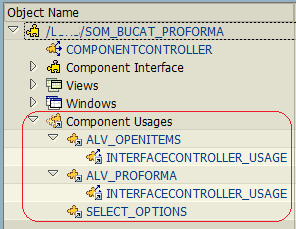
Simple Call with ALV Configuration Modelġ. You embed the TABLE view of ALV component SALV_WD_TABLE into a window of your component. Using external context mapping, you provide the DATA context node in the ALV interface controller with your application data.ģ. In doing so, you specify a name for the component usage (for example, MY_ALV).Ģ. You define a component usage for the ALV component SALV_WD_TABLE in your application component. Simple Call Without ALV Configuration Modelġ. When the prerequisites listed above are fulfilled, the process then taken depends on the required result. To do this, you use method BIND_TABLE from interface IF_WD_CONTEXT_NODE. ? You connect your internal data table to the context node (for example, using the supply method). The structure of the attributes in this context node (name and data type) and the structure of the internal data table that you connect to this context node in the next step are the same. ? You generate a Web Dynpro component for your application and save it as active.Ĭontext node with the cardinality 0.n. You must proceed as follows (ALV-independent) for all the variants listed above: Some of them, however, are tailored specifically for use with ALV. Most of the steps listed below are the same as those you follow with the Web Dynpro components. To do this, you require the ALV configuration model. You want to change the standard output using your application. ? ALV output in external view with ALV configuration modelĪLV output is just one of many elements in a view. You do not need the ALV configuration model.


You do not want to change the ALV output. ? ALV output in external view without ALV configuration modelĪLV output is just one of many elements in a view. ? Simple call with ALV configuration model ? Simple call without ALV configuration model The following variants outline the most important ways in which you can call ALV: If you want to use an ALV output in your application, you have to follow various steps, depending on the required result.


 0 kommentar(er)
0 kommentar(er)
